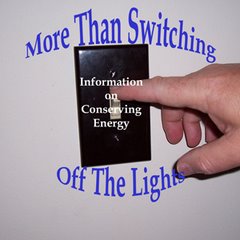One way to better understand the cost that a device uses in energy is to understand how electricity is purchased. Electric companies usually charge in kilowatt-hours or KWHs. It is a unit of energy equivalent to one kilowatt of power expended for one hour of time. This is equal to of having 10, 100 watt bulbs on for 1 hr.
It’s not always easy to figure out how much energy is being used, therefore even harder to understand the savings. First you need to understand the cost that your electric company is charging.
There may be a couple of different items that makes up the cost. For me, I discovered my cost by taking the total charge and divided it by the number of kWh used. Since this factored in some charges that are static, each month the kWh charge may be slightly different, but for a general idea this will work.
In my case it came to 13.5 cents per kWh.
Now you can do calculations on how much a device costs to use. Some electronics devices do not give the power in watts, but only amps. It’s a simple process to determine the wattage used. Multiply the amps by 120, for normal household current or 240 if it’s a 240 volt device.
Here are a couple of examples:
25 watt night light on 24 hours a day. 25*24=600 600/1000 = .6 kWh. At 13.5 cents a day this light cost 8.1 cents a day or $ 2.43 for a 30 day month.
3-60 watt incandescent light bulb in the living room on 4 hours a day. 3*60*4=720; 720/100 = .72 kWh. At 13.5 cents a day these lights cost 9.72 cents a day or $ 2.91 for 30 days.
3-13 watt compact fluorescent light bulb (light equal to 60 W incandescent) in the living room for 4 hours a day. 3*13*4=156 156/1000 - .156 kWh. At 13.5 cents a day these lights cost 2.1 cents a day or $ .63 for 30 days.
Using the above example if you replace the 3-60 watt incandescent bulbs with 3-13 watt compact fluorescent light bulbs the 30 day savings would be $ 2.28. A year savings would be $ 27.81.
Subscribe to:
Post Comments (Atom)

No comments:
Post a Comment